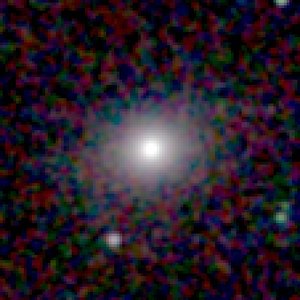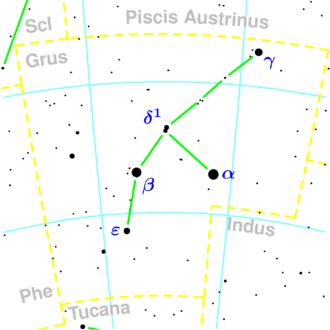NGC 7075
| Galaxy NGC 7075 |
|
|---|---|

|
|
| AladinLite | |
| Constellation | crane |
|
Position equinox : J2000.0 , epoch : J2000.0 |
|
| Right ascension | 21 h 31 m 33.0 s |
| declination | -38 ° 37 ′ 05 ″ |
| Appearance | |
| Morphological type | E +? / cD |
| Brightness (visual) | 12.7 mag |
| Brightness (B-band) | 13.8 mag |
| Angular expansion | 1.2 '× 0.9' |
| Position angle | 116 ° |
| Surface brightness | 12.6 mag / arcmin² |
| Physical data | |
| Affiliation | SSRS group 45 IC 5105 group LGG 445 |
| Redshift | 0.018479 ± 0.000067 |
| Radial velocity | 5540 ± 20 km / s |
|
Stroke distance v rad / H 0 |
(248 ± 17) · 10 6 ly (76.1 ± 5.3) Mpc |
| history | |
| discovery | John Herschel |
| Discovery date | September 4, 1834 |
| Catalog names | |
| NGC 7075 • PGC 66895 • ESO 343-004 • MCG -07-44-020 • 2MASX J21313299-3837046 • SGC 212826-3850.3 • NVSS J213133-383707 • LDCE 1467 NED002 | |
NGC 7075 is a cD galaxy of the Hubble type E3 in the constellation Crane in the southern sky . It is an estimated 248 million light years from the Milky Way and about 90,000 light years in diameter.
The object was discovered by John Herschel on September 4, 1834 .
